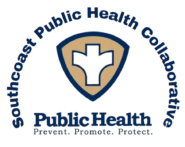In the spring, summer and fall, you may be exposed to vector-borne diseases spread from the bites of infected ticks and mosquitoes. Ticks and mosquitoes may carry bacteria, parasites or viruses.
One of the most common tick-borne diseases in the U.S. is Lyme disease. Ticks are found in wooded areas, high grass, or leaf litter. They are most active during the spring, summer and fall, but in warmer areas may be active all year round.
One of the most common diseases carried by mosquitoes in the U.S. is West Nile virus infection. Mosquitoes may be found near standing water, or in weedy or wooded areas. They are usually most active during dawn and dusk in the warmer months.
Symptoms of Vector-borne Diseases:
- Body/muscle aches
- Fever
- Headaches
- Fatigue
- Joint pain
- Rash
- Stiff neck
- Paralysis
Alpha-gal Syndrome (AGS)
Lone Star ticks are aggressive human biters, and their bite is associated with the development of a red meat allergy (alpha-gal syndrome) in some people. Alpha-gal syndrome (AGS) is a delayed-onset allergic reaction to a sugar molecule called alpha-galactose (alpha-gal).
Symptoms of AGS usually appear 2-8 hours after consuming mammalian meat (such as beef, pork, lamb, or venison). They may include:
- Hives
- Swelling (e.g., face, lips, tongue)
- Nausea
- Vomiting
- Diarrhea
- Abdominal pain
- Shortness of breath
- Anaphylaxis (in severe cases)
- People with AGS may also have an allergic reaction to certain medications and cosmetics that contain alpha-gal.
Protect Yourself:
- Wear a hat and light-colored clothing (so ticks can be easily spotted), including long-sleeved shirts and long pants tucked into boots or socks.
- Use insect repellents.
- Use repellents containing 20–50% DEET on exposed skin and clothing.
- Reapply repellents as needed (Always follow products labels).
- Use insecticides such as permethrin for greater protection.
- Permethrin can be used on clothing, but not on skin.
- One application to pants, socks, and shoes may be effective through several washings.
- Check skin and clothing for ticks daily. Check hair, underarms, and groin.
- Immediately remove ticks using fine-tipped tweezers.
- Grasp the tick firmly, as close to your skin as possible.
- Pull the tick’s body away from your skin with a steady motion.
- Clean the area with soap and water.
- Wash and dry work clothes using the “hot” settings to kill any ticks present.
- If you develop symptoms of a vector-borne disease, seek medical attention promptly. Tell your doctor that you work outdoors and report any ticks or mosquito bites.
Protect Yourself From Mosquitoes (flyer)
Protect Yourself From Ticks (flyer)
Source: National Institute for Occupational Safety and Health
